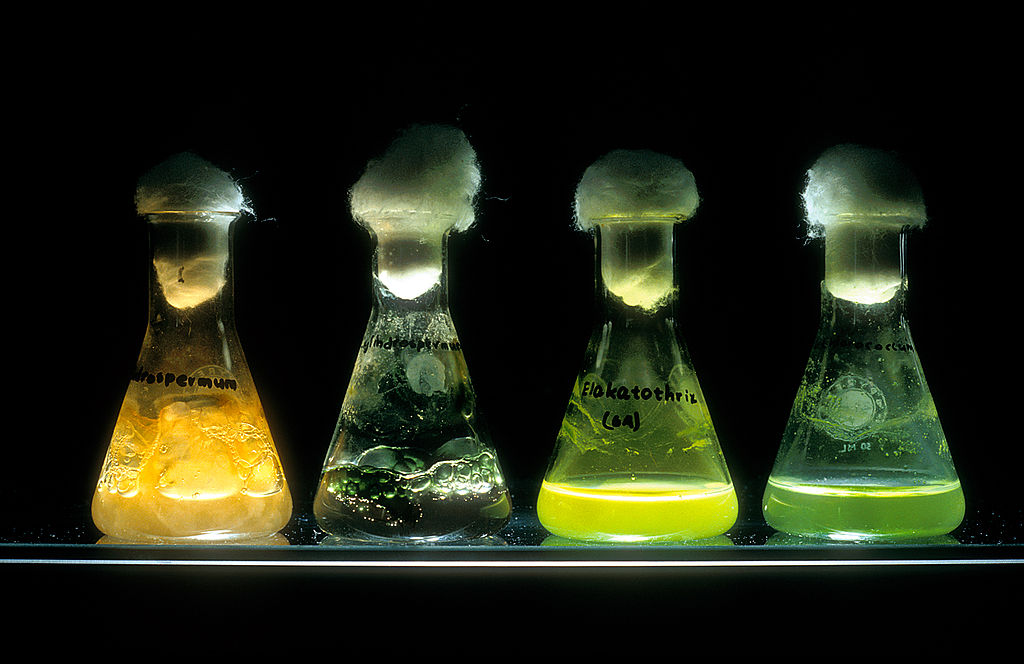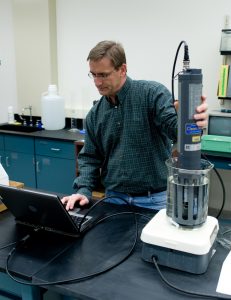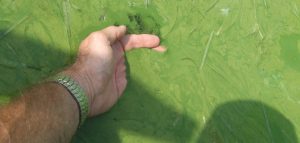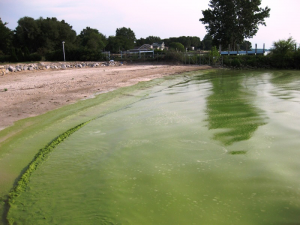
Leftover cynobacteria from previous years sitting on lakebed
Legacy cyanobacteria cells (also called bluegreen algae), which can produce the strain of microcystis responsible for microcystin toxins during late-summer as well as harmful algal blooms (HABS) in autumn on Lake Erie, may be helping jump-start the blooms or otherwise contribute to rapid development of blooms, without respect to current rain events or nutrient run-off from agricultural fields, according to a recently released study.

Tom Johengen at work in the laboratory calibrating instruments for field work, Photo by GLERL via flickr.com cc 2.0
What researchers did find was that there was significant viability found in the lake bottom cells. “We felt like those overwintering cells have a real, significant contribution to the next year’s bloom,” Johengen said. Basically, researchers believe that overwintering cells in the benthos, offer the new season’s bloom a head start. “There’s a source of seeds that are going to be in addition to the riverine fuel for growth.”
Some overwintering cells found to be more toxic

Dr. George Bullerjahn works with Timothy Davis, and Taylor Tuttle, Photo by BGSU via Sarah Bednarski
Davis said that despite whatever new information comes along, serious nutrient mitigation is likely the key to stop future blooms.
Increasing storms’ effect on HABs still unclear

Harmful Lake Erie algal bloom, Photo by michigan.gov
Despite the fact that living bluegreen algae cells can be found a foot or more beneath the lake floor, and more than a decade old, the introduction into the lake of the buried cells may be negligible, she said. Most storms sweep only a few centimeters of sediment off the lake bottom. Those are the cells which the scientists concentrated on.





